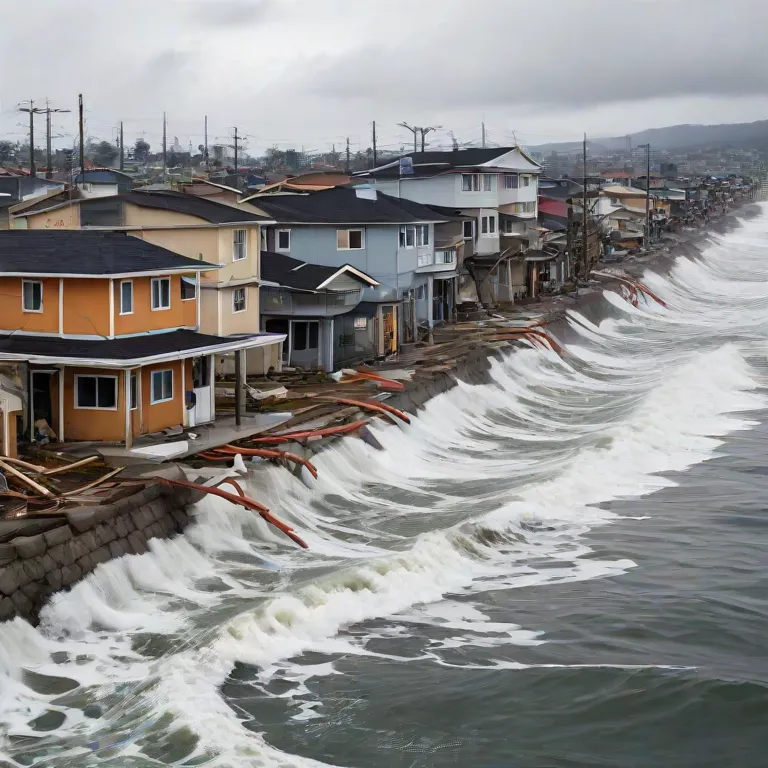
By Saeed Mirshekari
July 15, 2024


Access O'Mentors
Top Data Scientist Mentors from Fortune 500 Companies excited to help you out 1-on-1!
1️⃣ Explore freely
→
2️⃣ Apply confidently
→
3️⃣ Pay securely
→
4️⃣ Book instantly
Understanding Tsunamis: Statistical Insights and Data Analysis for Minimizing Loss
Tsunamis, often referred to as seismic sea waves, are among the most formidable and devastating natural disasters known to humanity. These immense waves, typically triggered by undersea earthquakes, volcanic eruptions, or landslides, can cause widespread destruction within minutes of their occurrence. Understanding the statistics surrounding tsunamis and employing advanced data analysis techniques are crucial steps towards predicting and mitigating their impact.
The Statistical Landscape of Tsunamis
Frequency and Occurrence
Tsunamis are not isolated events; they occur with varying frequency across different regions of the world. Statistical analysis reveals that the Pacific Ocean basin is particularly prone to tsunamis due to its active tectonic plate boundaries . However, occurrences are not limited to this region alone; they can happen in any oceanic area where tectonic activity is present. Understanding the historical frequency of tsunamis in different regions can aid in risk assessment and disaster preparedness efforts .
Magnitude and Severity
The severity of a tsunami is often measured by its magnitude, which correlates with the energy released during the triggering event . Magnitude scales, such as the Richter scale for earthquakes or the Moment Magnitude scale, are commonly used to quantify the strength of the initial disturbance . Tsunamis generated by higher magnitude events tend to have more destructive potential . Statistical analysis of past tsunami events allows researchers to assess the relationship between magnitude and the resulting impact, informing risk assessment and mitigation strategies .
Impact and Loss
The impact of tsunamis extends far beyond the initial wave itself . Coastal communities are vulnerable to flooding, infrastructure damage, and loss of life . Statistical analysis of past events provides valuable insights into the patterns of destruction caused by tsunamis, including the areas most at risk and the socio-economic factors that influence vulnerability . By understanding these patterns, policymakers can develop targeted interventions to minimize loss and enhance resilience in vulnerable communities .
The Role of Data Analysis in Tsunami Prediction
Early Warning Systems
One of the most critical applications of data analysis in tsunami mitigation is the development of early warning systems . These systems utilize real-time data from seismic sensors, ocean buoys, and satellite imagery to detect and analyze potential tsunami-generating events . By rapidly processing and interpreting incoming data, warning systems can issue alerts to at-risk populations, providing valuable time for evacuation and preparation . Advances in data analysis techniques, such as machine learning algorithms, enable more accurate and timely predictions, enhancing the effectiveness of early warning systems .
Predictive Modeling
Data analysis techniques, such as machine learning algorithms and numerical simulations, play a crucial role in predictive modeling for tsunamis . By analyzing historical data on seismic activity, oceanic conditions, and past tsunami events, researchers can develop models to forecast the likelihood and impact of future tsunamis . These models help authorities and emergency responders make informed decisions about risk mitigation strategies and disaster preparedness measures . Continuous refinement of these models through data analysis improves their accuracy and reliability, enhancing their effectiveness in mitigating the impact of tsunamis .
Risk Assessment and Vulnerability Mapping
Data analysis also facilitates risk assessment and vulnerability mapping, allowing policymakers to identify high-risk areas and prioritize resources for mitigation efforts . By analyzing factors such as population density, infrastructure resilience, and geological hazards, analysts can pinpoint areas most susceptible to tsunami damage and develop targeted interventions to reduce vulnerability . Geographic Information Systems (GIS) and remote sensing technologies enable comprehensive mapping of vulnerable areas, aiding in the development of effective mitigation strategies tailored to local conditions .
Case Studies: Data Analysis in Action
The 2004 Indian Ocean Tsunami
The 2004 Indian Ocean tsunami, triggered by a massive undersea earthquake off the coast of Sumatra, serves as a poignant example of the importance of data analysis in disaster mitigation . While the tsunami caught many coastal communities off guard, subsequent analysis of seismic data revealed patterns that could inform future early warning systems . The tragedy spurred international efforts to improve tsunami detection and response capabilities, leading to advancements in data analysis techniques and predictive modeling . Collaborative initiatives such as the Indian Ocean Tsunami Warning and Mitigation System (IOTWMS) leverage data analysis and international cooperation to enhance tsunami preparedness in the region .
Japan's Tsunami Preparedness
Japan, situated along the Pacific Ring of Fire, is no stranger to tsunamis . The country has invested heavily in data analysis and early warning systems to mitigate the impact of these deadly waves . Following the devastating Tohoku earthquake and tsunami in 2011, Japan bolstered its monitoring infrastructure and implemented sophisticated predictive models to enhance its preparedness and response capabilities . Real-time data analysis and rapid dissemination of warnings through systems like the Japan Meteorological Agency's Earthquake Early Warning System have proven instrumental in saving lives during tsunami events . Japan's proactive approach to tsunami preparedness, supported by data-driven decision-making, serves as a model for effective disaster resilience worldwide .
Advancements in Data Analysis Technologies
Artificial Intelligence and Machine Learning
Recent advancements in artificial intelligence (AI) and machine learning (ML) have revolutionized data analysis techniques for tsunami prediction and mitigation . AI algorithms can analyze vast amounts of complex data, including seismic signals, oceanic parameters, and historical tsunami records, to identify patterns and predict future events with unprecedented accuracy . ML models trained on diverse datasets enable adaptive learning and continuous improvement, enhancing the reliability of tsunami forecasting and early warning systems . The integration of AI and ML technologies into existing data analysis frameworks holds immense potential for enhancing disaster resilience and saving lives in tsunami-prone regions .
High-Resolution Satellite Imaging
High-resolution satellite imaging provides valuable data for tsunami monitoring and impact assessment . Satellite sensors capture detailed imagery of coastal regions before and after tsunami events, enabling rapid damage assessment and identification of critical infrastructure vulnerabilities . Data analysis techniques, such as change detection algorithms and image classification methods, facilitate the extraction of actionable insights from satellite imagery, supporting informed decision-making by emergency responders and policymakers . Continual advancements in satellite technology, coupled with innovative data analysis approaches, contribute to the development of more robust and comprehensive tsunami monitoring systems .
Conclusion
Tsunamis pose a significant threat to coastal communities worldwide, but advances in data analysis offer hope for mitigating their impact . By leveraging statistical insights, predictive modeling techniques, and cutting-edge technologies such as artificial intelligence and satellite imaging, researchers and policymakers can develop more effective early warning systems, improve risk assessment methodologies, and enhance disaster preparedness efforts . While tsunamis remain an ever-present danger, the power of data analysis provides a valuable tool in the ongoing quest to minimize loss and save lives in the face of natural disasters . Through continued research, innovation, and international collaboration, we can work towards a safer and more resilient future for coastal communities vulnerable to tsunamis .
Sources
- Pacific Tsunami Warning Center
- USGS: Tsunamis and Earthquakes
- National Oceanic and Atmospheric Administration (NOAA) Tsunami Information
- The Moment Magnitude Scale
- Understanding the Richter Scale
- Global Historical Tsunami Database
- World Meteorological Organization: Tsunamis
- International Tsunami Information Center
- National Geographic: Tsunamis
- World Health Organization: Tsunami
- Seismic Sensor Networks for Early Warning
- Ocean Buoys and Tsunami Detection
- Satellite Technology in Tsunami Warning Systems
- Machine Learning for Tsunami Prediction
- Numerical Simulations in Tsunami Research
- Historical Data and Tsunami Prediction
- Emergency Preparedness and Tsunami Models
- Geographic Information Systems in Tsunami Research
- Japan Meteorological Agency's Earthquake Early Warning System
- Indian Ocean Tsunami Warning and Mitigation System (IOTWMS)

Saeed Mirshekari
Saeed is currently a Director of Data Science in Mastercard and the Founder / Director of OFallon Labs LLC. He is a former research scholar at LIGO team (Physics Nobel Prize of 2017).